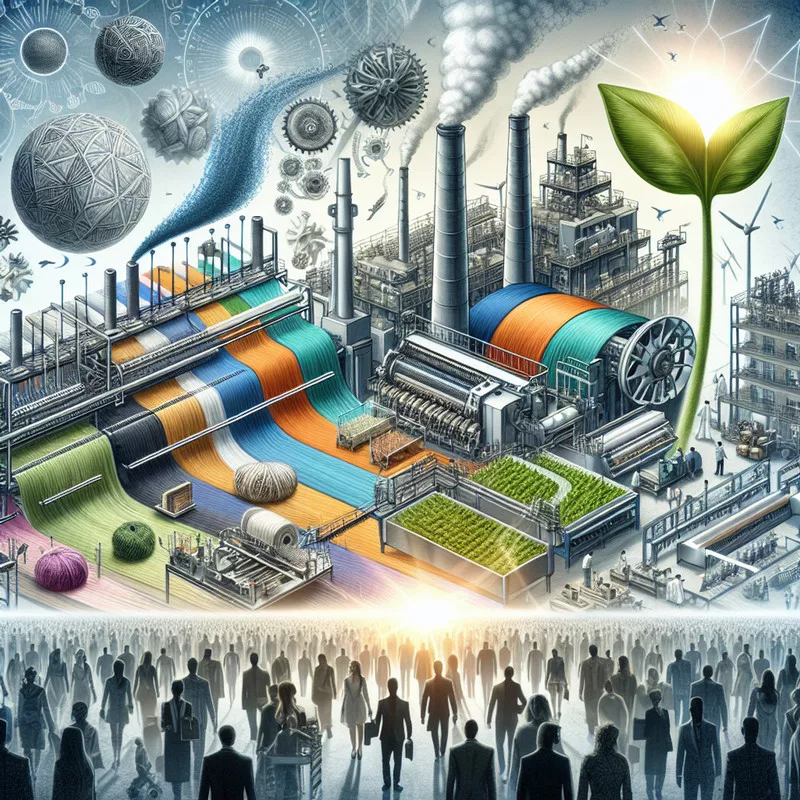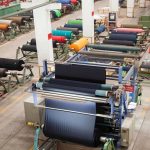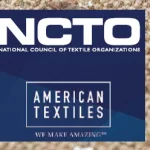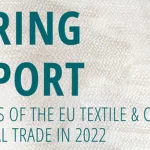A diverse group of workers operating high-tech machinery in a textile factory, with raw materials being transformed into finished products, symbolizing the growth and diversity of the European Technical Textile Industry.
Introduction
The European Technical Textile Industry is currently facing tough times, presenting a mix of challenges and opportunities. With Italy emerging as a leader in technical textiles production within Europe, the industry has generated €7 billion out of Europe’s €26 billion market. Despite this, the global technical textiles sector, valued at €160 billion, is heavily dominated by China, which holds 60% of the market share, while the EU contributes 15% (€26 billion).
The sector is crucial for various industries including fashion, medical, automotive, and construction. However, it grapples with issues such as raw material price fluctuations, limited availability of raw materials, and varying environmental mandates. On the upside, there are prospects for growth driven by increased technical textile use in farming and the demand for lightweight/fuel-efficient transportation.
In this article, we will delve into the current status of the European Technical Textile Industry, exploring key developments driving its progress and challenges faced in a global context. Additionally, we will examine future growth drivers and strategies for resilience to foster sustainable growth. Let’s navigate through the complexities and opportunities present in this versatile industry.
Understanding the Current Status of the European Technical Textile Industry
The European Technical Textile Industry is a significant sector that plays a crucial role in various applications across different industries. To understand its current status, it is essential to consider the market size, the prominent role of Italy, competition with China, and the EU’s initiatives to support the industry.
Market size, value, and trends
The European Technical Textile Industry is valued at €26 billion in 2021. It has been experiencing steady growth with a market growth rate projected at 10.5% from 2021 to 2028. This growth can be attributed to the increasing demand for technical textiles in various sectors such as fashion, medical field, automotive, construction, and more.
Prominent role of Italy
Italy has emerged as a leader in technical textiles production within Europe. It generates €7 billion of Europe’s market value, accounting for approximately 25.8% of Europe’s total output. Italy’s strong presence in the industry is driven by its high specialization and research and development capabilities.
Competition with China
While Europe holds a significant market share in technical textiles, it faces tough competition from China, which dominates the global market with a 60% market share. China’s large-scale production and competitive pricing pose challenges for European manufacturers.
EU’s initiatives to support the industry
The European Union recognizes the importance of the technical textile industry and has implemented various initiatives to support its growth. The EU funds research and innovation projects through programs like Horizon Europe, providing opportunities for collaboration and development of innovative technologies.
Understanding the current status of the European Technical Textile Industry provides valuable insights into its size, key players, and challenges faced by manufacturers. It sets the foundation for exploring further developments driving the industry forward.
Key Developments Driving the European Technical Textile Industry Forward
The European Technical Textile Industry is experiencing significant progress due to key developments in materials, technology, processes, and applications. These advancements are shaping the industry landscape and driving its growth in various sectors.
1. Innovative Materials
The industry is witnessing the emergence of innovative materials with enhanced properties, such as durability, flexibility, and sustainability. These materials are revolutionizing the production of technical textiles, opening up new possibilities for diverse applications.
2. Advanced Technology
The integration of advanced technology, including smart textiles and nanotechnology, is paving the way for cutting-edge solutions in technical textiles. This technological evolution is driving efficiency and performance improvements across different product categories.
3. Evolving Processes
Continuous advancements in manufacturing processes, such as 3D weaving, additive manufacturing, and functional finishing techniques, are redefining the production capabilities of the industry. These evolving processes are enabling the creation of complex textile structures and functional finishes to meet specific performance requirements.
4. Diverse Applications
Technical textiles are finding versatile applications across a wide range of sectors, including fashion, medical, automotive, construction, and more. The adaptability and multifunctionality of these textiles make them indispensable in addressing evolving needs across diverse industries.
The synergy of these key developments is fostering an environment of innovation and progress within the European Technical Textile Industry, positioning it for sustained growth and relevance in the global market.
Navigating Trade Dynamics: Exports and Imports in the European Technical Textile Sector
Exports and imports are crucial for the growth of the European Technical Textile Industry. In this section, we will explore the export-import activities in this sector and the major countries involved in trade with Europe.
Overview of Export-Import Activities
Export-import activities are important for the industry’s growth as they help companies access global markets, collaborate with international partners, and drive innovation. Here’s an overview of how export and import contribute to the European Technical Textile Industry:
Exports from Europe
Expanding market reach: By exporting their technical textile products, European companies can enter new markets and reach a wider customer base.
Establishing valuable partnerships: Through exports, European businesses can connect with potential partners abroad, leading to collaborations that benefit both parties.
Creating opportunities for sustainable growth: Selling products internationally can provide additional revenue streams for companies, contributing to their long-term success.
Imports to Europe
Ensuring a steady supply chain: Importing raw materials or specialized fabrics from other countries helps European manufacturers maintain a reliable source of inputs for their production processes.
Accessing high-quality materials: Some countries may have expertise or resources in producing specific types of technical textiles. Importing these materials allows European companies to access superior quality inputs.
Major Countries Involved in Trade with Europe
Several countries are key trade partners of Europe when it comes to technical textiles. These countries engage in both import and export activities, contributing to the overall growth of the industry. Here are some notable trade partners:
China: As a dominant player in the global textile market, China is a crucial trade partner for Europe. While Chinese companies hold a significant share of the technical textile market worldwide, Europe maintains its position by exporting high-quality products to China.
United States: The United States is another important trade partner for Europe’s technical textile industry. The two regions engage in bilateral trade, exchanging products and expertise. While both regions have their strengths and areas of competition, there is also potential for collaboration and knowledge-sharing.
India: India has emerged as an increasingly important player in the technical textile market. The country imports technical textiles from Europe to meet its growing demand, while also exporting its own products to Europe.
Japan: Japan’s advanced technology and expertise in technical textiles make it a valuable trade partner for Europe. The two regions collaborate on research and development, exchanging knowledge and driving innovation in the industry.
Other European countries: Within Europe, there is also significant trade activity between different countries. Italy, for example, a prominent producer of technical textiles, exports its products to various European nations as well as other regions.
By navigating trade dynamics and establishing strong partnerships with these countries, the European Technical Textile Industry can leverage opportunities for growth and remain competitive in the global market.
Challenges and Opportunities in a Global Context: A Comparative Analysis
Assessment of competitive positions: Europe vs. China in the global market for technical textiles
When comparing Europe to China, it’s evident that China holds a dominant position, generating 60% of the global market share in technical textiles. This presents a significant competitive challenge for Europe, which accounts for 15% of the market. However, Europe’s emphasis on high specialization and R&D, particularly in countries like Italy, has positioned it as a leader in technical textile production.
Contrasting dynamics: The mature US market versus Europe’s evolving landscape
In contrast, the USA boasts a mature technical textile market, presenting a different dynamic compared to Europe’s evolving landscape. While the USA has well-established industry players and infrastructure, Europe is actively exploring new avenues for growth and innovation.
Identifying potential for collaboration as well as areas of competition with the United States
Despite these differences, there are ample opportunities for collaboration between Europe and the USA. Leveraging each region’s strengths could lead to mutually beneficial partnerships and advancements in technical textile applications. By identifying areas of competition and avenues for cooperation, both regions can contribute to the growth and innovation of the global technical textile industry.
Future Outlook: Market Forecast and Growth Drivers for the European Technical Textile Industry
The European Technical Textile Industry is poised for a promising future, with a forecasted growth trajectory and several key drivers that will shape the industry. Here are some insights into the future outlook of the market and the factors influencing its growth:
1. Forecasted growth trajectory
The European Technical Textile Industry is expected to witness significant growth in the coming years. According to market research, the industry is projected to grow at a compound annual growth rate (CAGR) of 10.5% from 2021 to 2028. This growth can be attributed to various factors such as increasing demand for technical textiles across sectors, advancements in technology and materials, and evolving consumer preferences.
2. Emerging trends
The industry is witnessing several emerging trends that are expected to shape its future. These include:
Sustainable solutions: With growing awareness about environmental concerns, there is a rising demand for sustainable and eco-friendly technical textiles. Companies are investing in research and development to develop innovative materials and processes that minimize environmental impact.
Smart textiles: The integration of electronics and sensors into textiles is opening up new possibilities for applications in areas such as healthcare, sports, and automotive industries. Smart textiles offer enhanced functionality, comfort, and performance.
Customization and personalization: Consumers are increasingly seeking customized products that cater to their specific needs and preferences. This trend is driving the development of customizable technical textiles that offer unique features and benefits.
Digitalization: The adoption of digital technologies such as artificial intelligence, Internet of Things (IoT), and data analytics is transforming the technical textile industry. These technologies enable improved efficiency, quality control, and supply chain management.
3. Key factors influencing future demand
Several factors will drive the demand for European technical textiles in the future:
Increasing emphasis on safety and protection: Technical textiles play a crucial role in providing safety and protection in various sectors, including healthcare, defense, and industrial applications. The growing focus on safety regulations and standards will drive the demand for advanced technical textiles.
Growing demand from emerging sectors: Industries such as aerospace, agriculture, and energy are increasingly recognizing the benefits of technical textiles. As these sectors continue to evolve and expand, the demand for specialized technical textiles will rise.
Shift towards lightweight and sustainable materials: Lightweight materials are gaining traction across industries due to their fuel efficiency and environmental benefits. Technical textiles offer lightweight solutions without compromising on performance, making them an attractive choice for industries such as automotive and transportation.
Increasing investment in research and development: To stay competitive in the global market, European companies are investing in research and development to develop innovative products with enhanced functionalities. This continuous innovation will drive future demand for technical textiles.
The future of the European Technical Textile Industry looks promising, with a positive growth trajectory and several key drivers supporting its expansion. By staying proactive, embracing emerging trends, and focusing on sustainability and innovation, businesses in the industry can position themselves for long-term success.
Harnessing Opportunities Across Diverse Sectors: The Versatile Use of Technical Textiles in Europe
Technical textiles have found diverse applications across various sectors in Europe, driving demand and creating opportunities for growth. Let’s explore some key application areas where the usage of technical textiles is prevalent:
1. Fashion
Technical textiles have revolutionized the fashion industry, enabling designers to create innovative and functional garments. From high-performance sportswear to smart fabrics with embedded sensors, technical textiles are transforming the way we dress. For example, companies like Schoeller Textil AG and Polartec are known for their advanced textile solutions that offer durability, breathability, and weather protection.
2. Medical Field
Technical textiles play a crucial role in the medical field, providing solutions for wound care, surgical procedures, and medical equipment. Antimicrobial textiles, compression garments, and implantable fabrics are just a few examples of how technical textiles are improving patient outcomes and enhancing healthcare practices.
3. Automotive
The automotive industry heavily relies on technical textiles for various applications. These textiles are used in car interiors for seating upholstery, airbags, carpets, and noise reduction. Additionally, technical textiles are also used in the production of tires, filters, and engine components.
4. Other Sectors
Technical textiles have permeated several other sectors as well:
- Construction industry: geotextiles, reinforcing materials, and insulation
- Agriculture sector: crop protection, shade structures, and animal husbandry
- Packaging industry: flexible packaging solutions
These application areas represent just a fraction of the versatile use of technical textiles in Europe.
The main markets driving demand for technical fabrics include:
- Manufacturing industry
- Transport sector
- Furniture and packaging industry
- Construction sector
By harnessing the opportunities across these diverse sectors, European manufacturers can capitalize on the increasing demand for technical textiles. The versatility of technical textiles allows for continuous innovation and adaptation to changing market needs, ensuring a promising future for the industry.
Overcoming Challenges for a Resilient Future: Strategies for the European Technical Textile Sector
The European Technical Textile Industry faces several challenges that require strategic solutions to ensure a resilient future.
Addressing Raw Material Price Fluctuations and Availability
The industry is significantly impacted by fluctuations in raw material prices, which can affect production costs and profit margins. Implementing proactive strategies to hedge against price volatility and diversifying sourcing options can help mitigate these challenges.
Examining the Cost-to-Benefit Ratio for Small Manufacturers
Small manufacturers in the technical textile sector often face challenges in achieving a favorable cost-to-benefit ratio due to limitations in economies of scale. Exploring collaborative partnerships, leveraging advanced manufacturing technologies, and optimizing supply chain processes can enhance cost efficiencies for small manufacturers.
Navigating Environmental Sustainability Requirements and Opportunities for Circularity
As environmental sustainability gains prominence, the industry must proactively embrace eco-friendly practices and circularity initiatives. Investing in sustainable production processes, exploring recycled or bio-based raw materials, and adopting closed-loop manufacturing systems can align the sector with evolving environmental mandates while unlocking opportunities for long-term growth.
By addressing these challenges head-on and implementing strategic measures, the European Technical Textile Industry can fortify its position and pave the way for sustained success in a rapidly evolving global landscape.
Fostering Innovation and Collaboration to Drive Competitiveness: The Role of Businesses and Institutions
The European Technical Textile Industry has the potential to drive growth and competitiveness through strategic innovation and collaboration. Here are key talking points to consider:
Leveraging lightweight/fuel-efficient transportation demand
With an increasing focus on sustainability and fuel efficiency, technical textiles present an opportunity for businesses to innovate in the transportation sector. By developing lightweight materials that contribute to fuel efficiency, companies can align with market demands while driving growth in the industry.
Promoting increased technical textile use in sectors like farming and infrastructure development
There is untapped potential for technical textiles in sectors such as farming and infrastructure development. By collaborating with relevant institutions and businesses, the industry can explore innovative applications of technical textiles to address critical needs in these sectors, ultimately expanding market opportunities.
Importance of industry-academia partnerships and knowledge sharing
Collaboration between industry players and academic institutions is crucial for driving innovation and maintaining competitiveness. By fostering partnerships, businesses can access cutting-edge research and expertise, while academic institutions benefit from practical insights and real-world applications. This collaborative approach can lead to the development of breakthrough technologies and solutions that propel the industry forward.
Examining the Competitive Landscape: Key Players in the European Technical Textile Industry
The European Technical Textile Industry boasts several key players who have made significant contributions to the sector. These companies play a pivotal role in driving innovation, setting industry standards, and shaping the competitive landscape within Europe and globally.
Key European Companies
DuPont
DuPont is a prominent player in the European Technical Textile Industry, known for its cutting-edge solutions and products. The company has been instrumental in developing advanced textiles for various applications, including protective clothing, automotive components, and industrial materials.
Ahlstrom-Munksjö
Ahlstrom-Munksjö is a leading manufacturer of fiber-based materials, supplying innovative and sustainable solutions to the technical textile industry. The company’s focus on environmentally friendly materials and processes has earned it a strong position in the market.
Freudenberg Performance Materials
With a rich history of expertise in technical textiles, Freudenberg Performance Materials has been a driving force behind numerous groundbreaking innovations. The company’s diverse product portfolio caters to an array of industries, showcasing its versatility and commitment to excellence.
Mitsui Chemicals Inc.
Mitsui Chemicals Inc. has established itself as a key player in the European technical textile landscape, leveraging its extensive research and development capabilities to deliver high-performance materials. The company’s contributions span across multiple sectors, reinforcing its influence in the industry.
Alexium International
Alexium International is renowned for its specialty chemical treatments that enhance the performance and functionality of technical textiles. The company’s focus on developing advanced solutions has positioned it as an important player in driving industry advancements.
Berry Global Inc.
As a global supplier of nonwoven materials and engineered products, Berry Global Inc. has significantly impacted the European Technical Textile Industry with its diverse range of offerings. The company’s commitment to quality and innovation has solidified its presence in the competitive landscape.
DeRoyal Industries Inc.
DeRoyal Industries Inc. stands out as a leading provider of medical textiles and healthcare solutions in Europe. The company’s dedication to producing high-quality, reliable products has earned it recognition as a key contributor to the industry’s growth.
Swift Textile Metalizing LLC
Swift Textile Metalizing LLC specializes in metallized fabrics and materials that find applications across various sectors. The company’s unique offerings have bolstered its position as an important player shaping the technical textile market.
Toyobo Co. Ltd.
Toyobo Co. Ltd. is known for its innovative approach to developing functional materials and textiles that cater to diverse industrial needs. The company’s relentless pursuit of excellence has cemented its status as a major player in the European technical textile arena.
Asahi Kasei Corporation
Asahi Kasei Corporation has been instrumental in driving advancements in technical textiles through its extensive range of high-performance materials. The company’s commitment to delivering value-added solutions has significantly influenced the industry landscape.
These key players collectively contribute to the vibrancy and dynamism of the European Technical Textile Industry, propelling it towards sustainable growth and innovation.
Conclusion
The European Technical Textile Industry has proven its resilience in the face of numerous challenges. Despite tough times, the industry has continued to innovate and adapt, positioning itself for future growth.
Italy’s leadership in technical textiles production
The industry’s ability to overcome obstacles is evident in the prominent role of Italy, which has emerged as a leader in technical textiles production. With €7 billion generated out of Europe’s €26 billion market, Italy’s specialization and R&D efforts have propelled the industry forward.
EU initiatives to support the industry
While competition with China’s dominant position in the global market persists, the European Union has taken initiatives to support its technical textile industry. These initiatives aim to increase market share and foster collaboration within Europe.
Key developments driving the industry
The industry is driven by key developments such as innovative materials, advanced technology, and evolving processes. These factors have shaped the industry landscape and opened up diverse applications across sectors like fashion, medical, automotive, and more.
Overall, stakeholders in the European Technical Textile Industry are encouraged to embrace opportunities and drive sustainable growth. By leveraging lightweight and fuel-efficient transportation demand and exploring increased usage in sectors like farming and infrastructure development, the industry can tap into new avenues for expansion.
“The European Technical Textile Industry has shown remarkable resilience in the face of challenges. By embracing opportunities for innovation and collaboration, stakeholders can drive sustainable growth and secure a prosperous future.”






